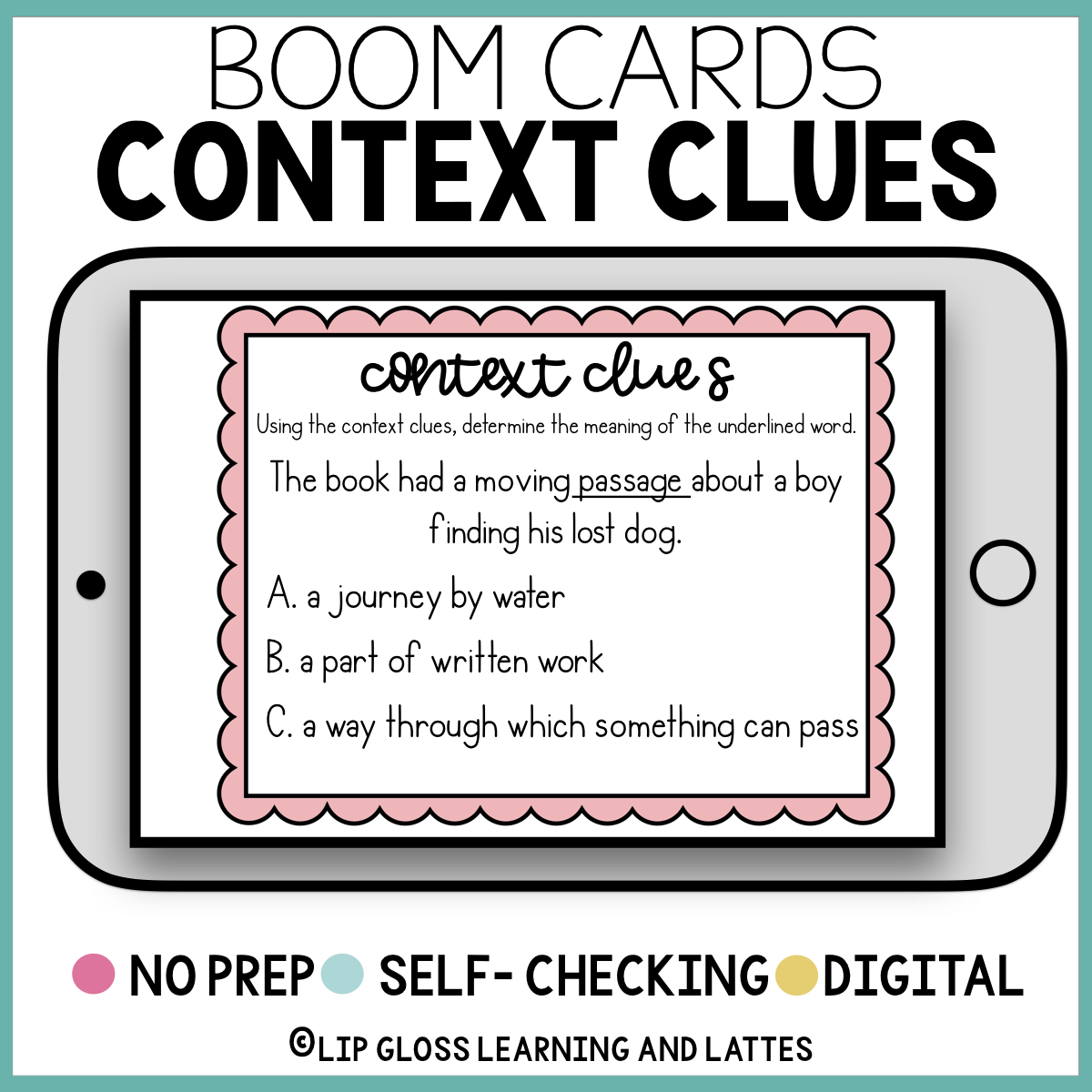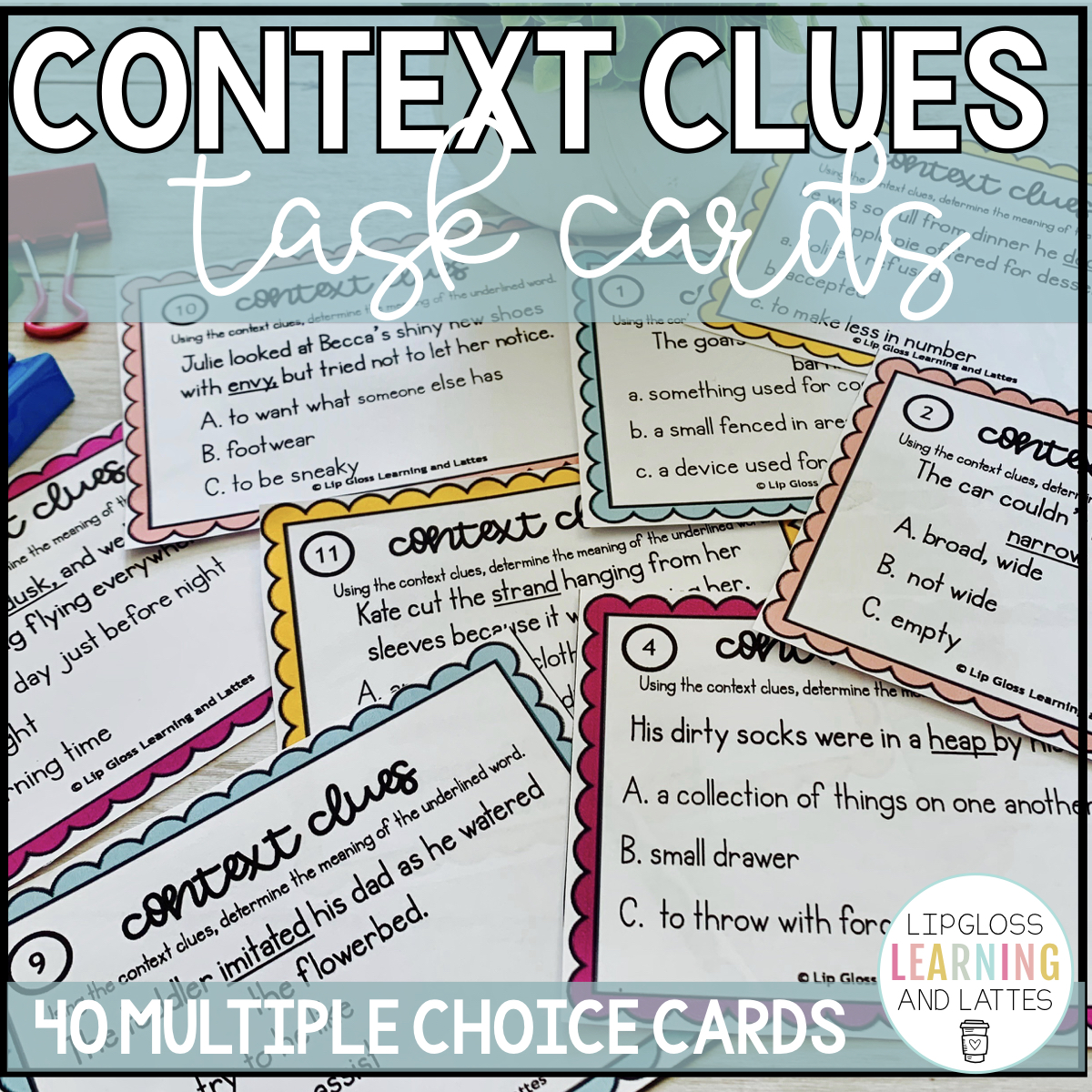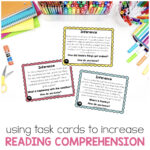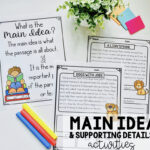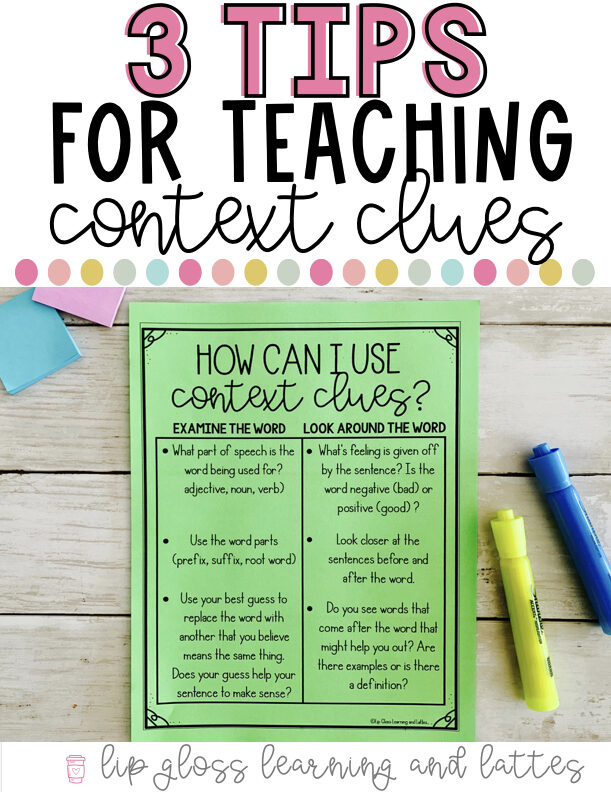
One way to instill confidence in your students’ reading abilities is to help them master context clues! Using context clues to understand a new word’s meaning is something our students will continue to use far beyond their time in our classrooms. Today I want to share with you a few tips to teach context clues to your 2nd, 3rd and 4th grade students.
Understanding how to decipher the context around an unfamiliar word can help a student understand how it’s used and it’s meaning. Readers who are struggling can benefit greatly from learning these skills.
That’s why it’s important to give them the instruction and tools they need for them to know how to do it correctly!
I’ve rounded up a few great tips and resources to help you teach and practice context clues with your students.
Step 1: Teach The Different Types Of Context Clues Students May See.
I love a good acronym if it will help students remember something that will help them out! The acronym IDEAS can help students recall each of the different types of context clues they should look for.
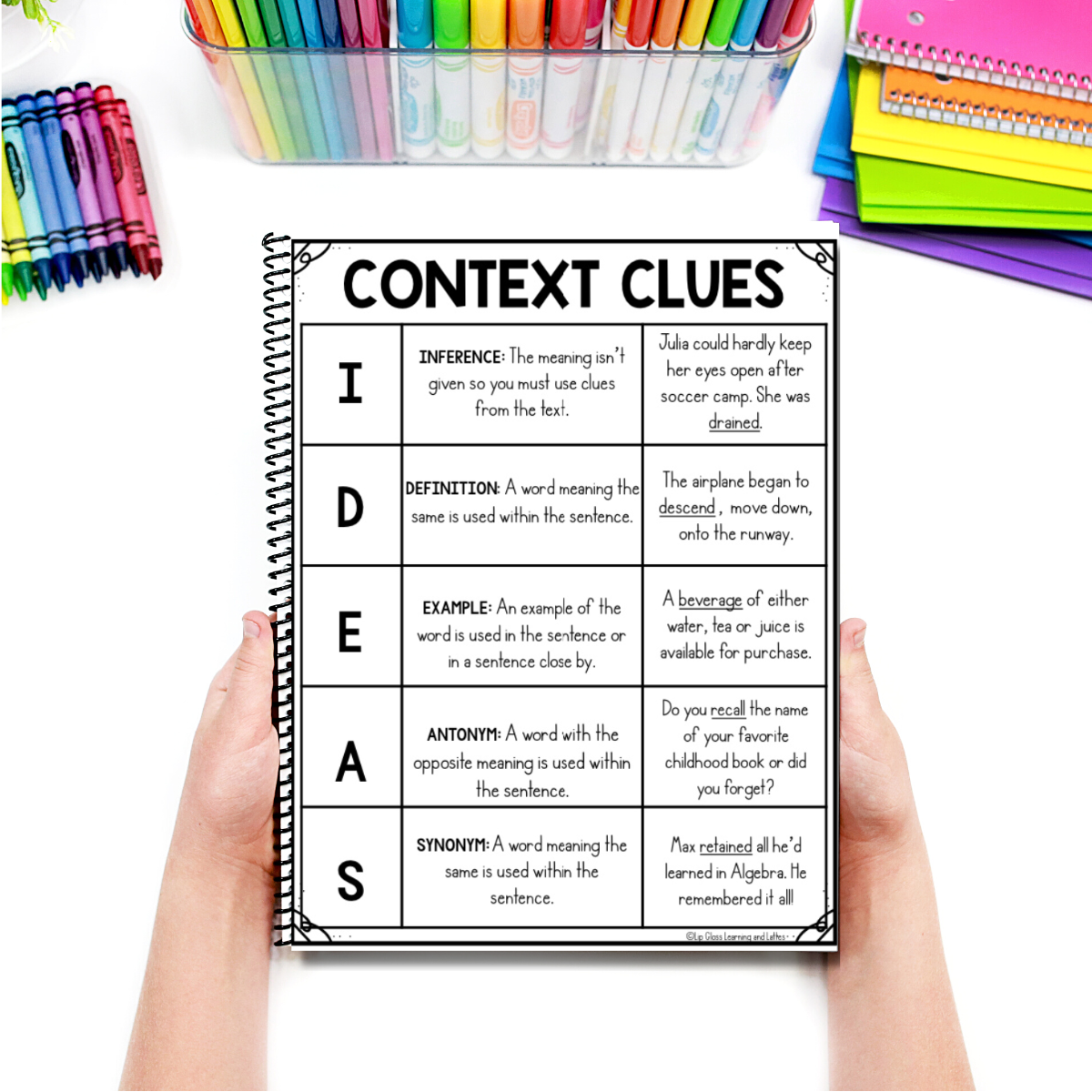
Inference- A word or group of words that mean the opposite is used in the sentence.
Definition- A word meaning the same is used within the sentence.
Example- Discusses a problem and then tells how it was or can be solved.
Antonym- The word is defined in the sentence or text.
Synonym- The meaning isn’t given so you must use clues from the text.
Step 2: Teach What To Do If The Type Of Context Clue Isn’t As Obvious.

There will be times when a student comes to a word and identifying the type surrounding context clues isn’t so easy. When this happens, I like to give students a few more strategies they can use.
I tell them to:
- Look Around the Word
- What’s the feeling given off by the sentence? Is the word negative (bad) or positive (good) ?
- Look closer at the sentences before and after the word.
- Do you see words that come after the word that might help you out? Are there examples or is there a definition?
2. Examine the Word
- What part of speech is the word? (adjective, noun, verb)
- Use the word parts (prefix, suffix, root word)
- Use your best guess to replace the word with another that you believe means the same thing. Does your guess help your sentence to make sense?
You can snag both of these Context Clue Anchor Charts for FREE at the bottom of this post!
Step 3: Give Students Lots of Practice.
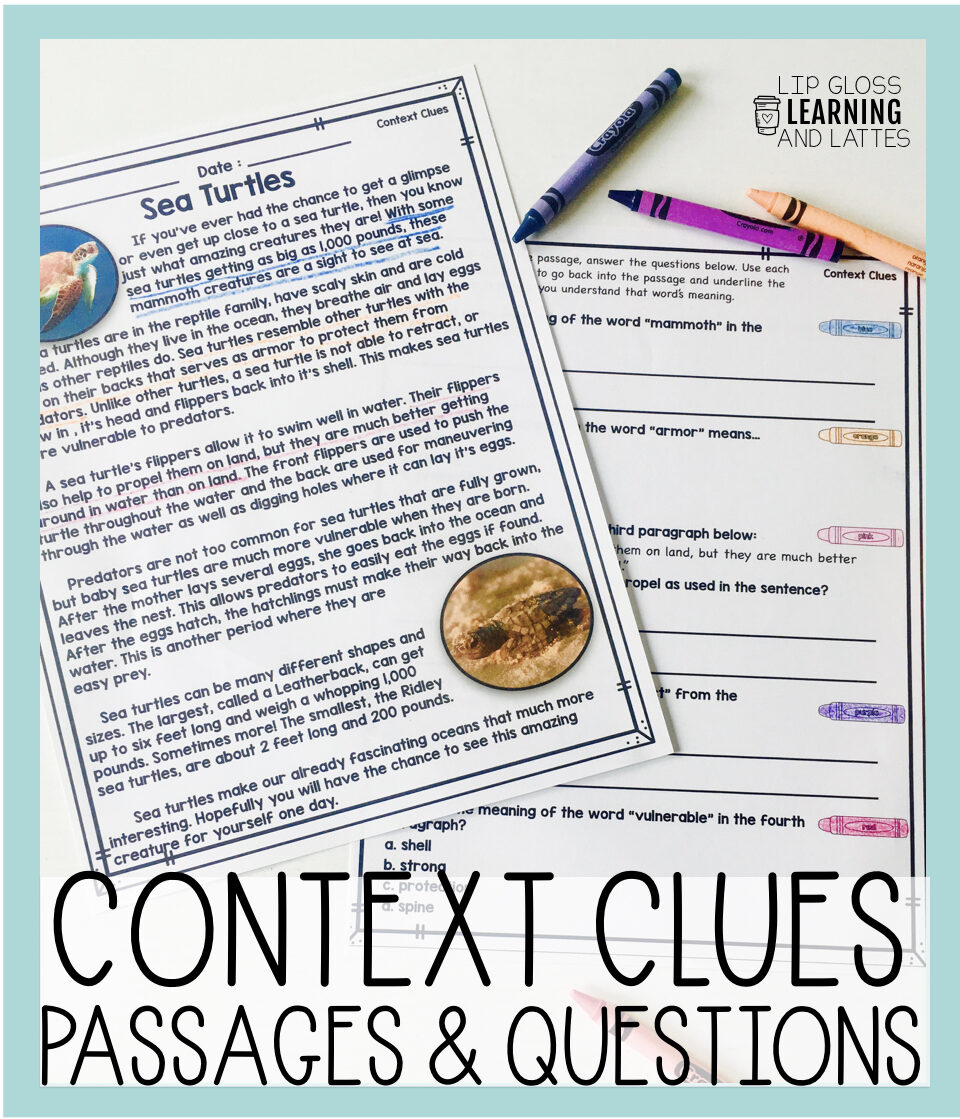
I recently created a few resources to help students master locating and using context clues. These Non-Fiction Passages provide students with engaging, informational texts and as an added bonus students will build their personal knowledge of the new topics covered.
It’s important to use a variety of texts to give students practice using context clues.
Using shorter texts will allow students several opportunities to put their context clues skills to use.
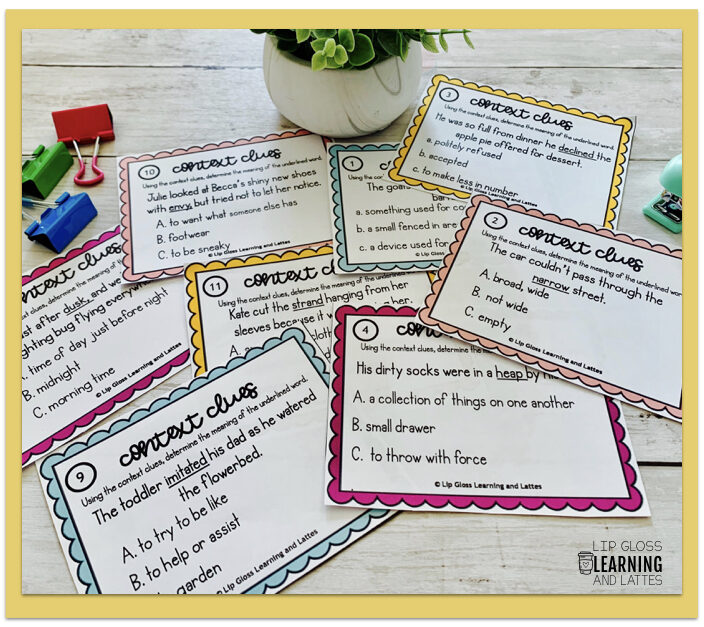
This set of Multiple Choice Context Clues Task Cards are great for engaging students and allowing repetition while using context clues to understand the meaning of unfamiliar words.
I even have a Boom Cards option of this resource that is digital and self checking! I love Boom Cards because students get instant feedback.
You can click on the images below to check these resources out!